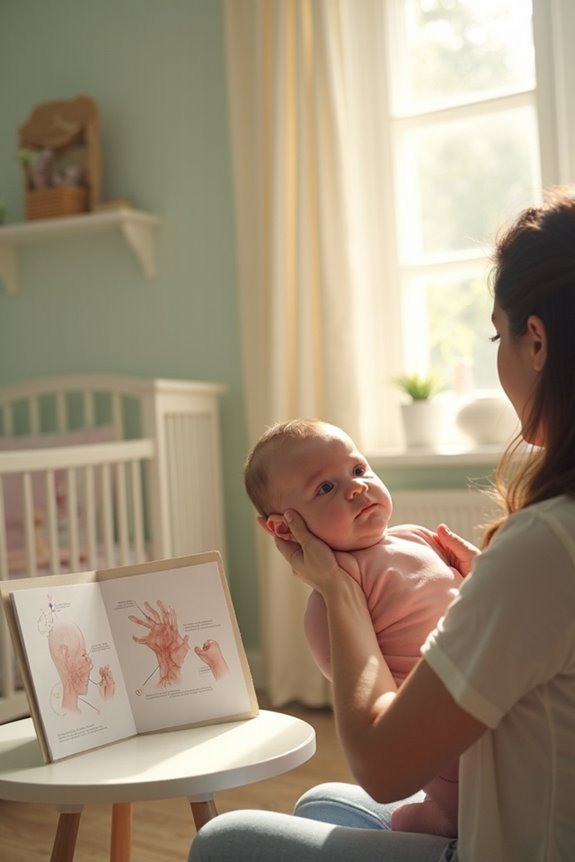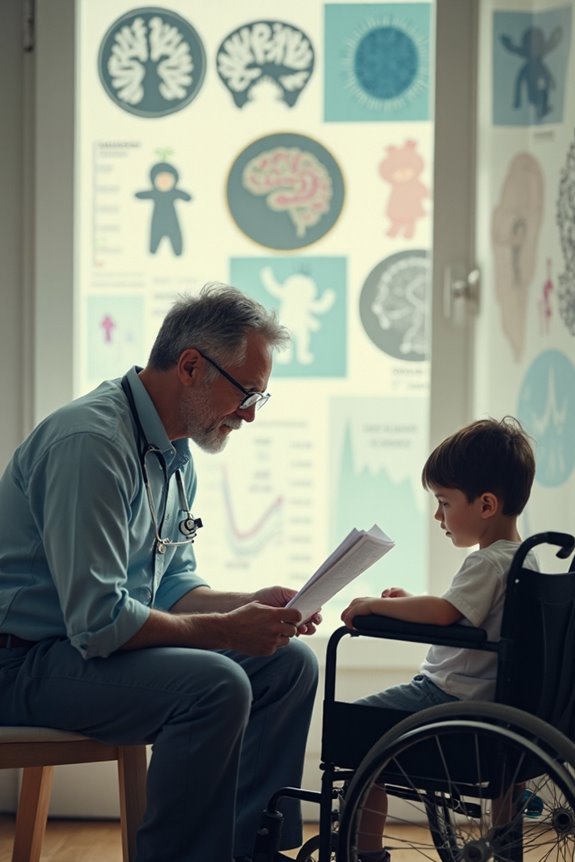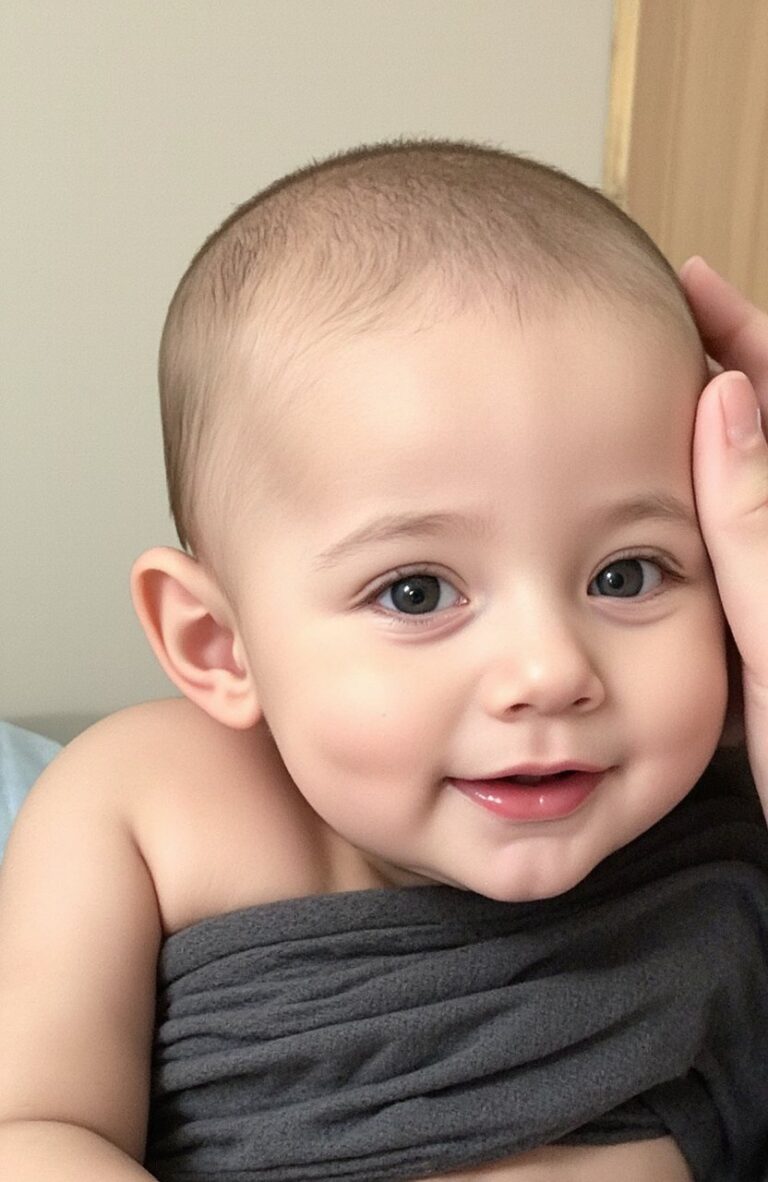Shaken Baby Syndrome (SBS) is a serious form of child abuse caused by violently shaking a baby. We can recognize SBS through signs like breathing difficulty, irritability, and dilated pupils. Early detection using tools like CT scans is crucial to aid swift intervention. To prevent SBS, we need to educate caregivers about safe infant handling and stress management. Community programs and healthcare providers play pivotal roles. By continuing, you’ll uncover more on protecting our little ones.
Key Takeaways
- Shaken Baby Syndrome (SBS) is a severe form of child abuse caused by violently shaking an infant or young child.
- Common symptoms of SBS include breathing problems, convulsions, irritability, and changes in appetite.
- Early detection through imaging, eye exams, and physical assessments improves outcomes and reduces risks.
- Educating caregivers on the dangers of shaking and stress-relief techniques is crucial for prevention.
- Community programs and healthcare provider guidance enhance awareness and promote safe infant care practices.
Definition and Causes of Shaken Baby Syndrome
Shaken Baby Syndrome, a term that might sound unfamiliar to some, is a serious issue we need to understand. It’s a severe form of child abuse caused by violent shaking, leading to brain injury. The shaking mechanics involve the brain rebounding against the skull, which can result in devastating consequences like brain damage or even death. This often occurs when caregivers, overwhelmed by stress or frustration, react to a baby’s incessant crying.
- Caregiver Stress:
- Crying can trigger overwhelming emotions.
- Stress management is crucial.
- Mechanics of Shaking:
- Babies have weak neck muscles.
- Their large heads and fragile skulls make them susceptible to injury.
Understanding these elements helps us prevent such tragedies. Let’s commit to creating a safer environment for our little ones.
Recognizing Symptoms and Signs

As we’ve seen, understanding the causes of Shaken Baby Syndrome is the first step in prevention. Let’s look at symptom recognition to protect our little ones. Breathing problems, convulsions, and extreme irritability may appear suddenly. These physical symptoms can be accompanied by behavioral indicators like changes in appetite or mental status. We might notice dilated pupils, loss of reflexes, or posture abnormalities.
Internal injuries, such as brain or retinal hemorrhages, can occur, though they’re less visible. Recognizing these signs requires observing both behavior and physical changes. If you suspect Shaken Baby Syndrome, it’s crucial to seek medical help immediately. By staying alert to these symptoms, we can act swiftly, ensuring the safety and health of our children.
Diagnostic Methods and Tools

When it comes to diagnosing Shaken Baby Syndrome (SBS), it’s crucial to have a clear understanding of the various methods and tools available. Let’s explore these together.
- Imaging Techniques: We rely on X-rays to spot skeletal injuries like rib fractures. CT scans help us detect brain injuries such as hemorrhages and swelling. When CT results are unclear, MRIs give us detailed images of the brain and spinal cord. Occasionally, ultrasonography and bone scans are used to assess internal and occult fractures.
- Clinical Examinations: Eye exams reveal retinal hemorrhages, while physical and neurological assessments check for trauma or distress signs.
- Diagnostic Criteria: We face challenges due to non-uniform criteria and symptoms mimicking other conditions. Hence, a comprehensive approach involving multiple tests is essential.
Understanding Brain Injuries in SBS
Let’s shift our focus to how brain injuries occur in Shaken Baby Syndrome (SBS). When an infant is forcefully shaken, their brain moves uncontrollably within the skull. This violent motion can stretch and tear neural pathways, blood vessels, and nerve axons. Even without a skull fracture, a severe brain injury is possible. Here’s what happens:
- Diffuse axonal injury from brain tissue shearing can occur.
- Subdural and retinal hemorrhages are indicators.
- Hypoxic-ischemic injury might result from disrupted breathing.
Secondary damage, like increased intracranial pressure and oxygen deprivation, exacerbates the initial injury. Clinically, this may manifest as lethargy or seizures. Sadly, even brief shaking can lead to permanent brain damage, requiring lifelong care for survivors. Understanding these mechanisms helps us grasp the seriousness of SBS.
Importance of Early Detection

Timely detection of shaken baby syndrome (SBS) is crucial for improving outcomes and reducing risks, and we can’t stress enough how important it is to act quickly. Recognizing symptoms like altered consciousness or breathing problems allows for early intervention, which can reduce mortality risk and enhance recovery. As caregivers, understanding these signs is vital.
We need to educate ourselves and others to distinguish SBS from other conditions. Tools like CT scans and retinal exams are essential for accurate diagnosis, offering critical insights that support legal cases. Early detection not only aids in effective medical response but also connects families to resources and support. By focusing on caregiver education, we can better protect our little ones and ensure their well-being.
Effective Prevention Strategies
Preventing shaken baby syndrome (SBS) starts with education and awareness. We all know that understanding how to handle infant crying safely is crucial. Let’s dive into some effective prevention strategies:
- Prevention Education: We can significantly reduce SBS by ensuring parents and caregivers receive routine counseling about the dangers of shaking a baby. This includes distributing written materials and engaging healthcare providers to reinforce these messages during check-ups.
- Caregiver Support: It’s essential to teach safe infant handling techniques. Encouraging caregivers to take breaks when overwhelmed and engage in stress-relieving activities can prevent feelings of frustration. Remember, it’s perfectly okay to ask for help.
Long-term Effects on Survivors

As we consider how to prevent shaken baby syndrome, it’s equally important to understand the long-term effects on those who survive it.
Survivors often face:
- Cognitive Impairments: Challenges like confusion and memory issues can persist.
- Motor Challenges: Paralysis and coordination issues hinder movement.
- Sensory Issues: Vision loss and swallowing problems affect daily life.
- Developmental Delays: Physical and learning delays are common.
- Neurological Disorders: Seizures and intellectual disabilities require attention.
Daily life doesn’t just revolve around these challenges. Emotional effects like anxiety, education challenges, and difficulties with social integration add layers of complexity. Lifelong care becomes a necessity, and family support plays a crucial role. Let’s remember, understanding these impacts can drive better prevention and support for affected families.
Available Treatment Options
When we’re faced with shaken baby syndrome, understanding the available treatment options can make a world of difference for both the child and their family. Let’s explore what can be done:
- Medication Therapies: These include anticonvulsants for seizure control, diuretics to lower intracranial pressure, and pain management with analgesics. Anti-inflammatory drugs may also reduce brain swelling.
- Surgical Options: In severe cases, procedures like hematoma evacuation remove blood clots, while shunts can drain excess fluid to relieve pressure. Craniotomies might be performed to allow the brain space to swell safely.
- Emergency Interventions: Breathing support, like oxygen therapy, and stabilization procedures ensure vital functions are maintained.
Each step, though challenging, is crucial in the journey toward recovery, offering hope and healing.
Support Systems for Caregivers
Moving forward from treatment options, it’s important to remember that caregivers and families need support just as much as the child does. We’re here to highlight the vital networks and resources available. Peer networks play a crucial role, offering spaces where shared experiences lead to emotional healing. Families affected by Shaken Baby Syndrome can find solace in groups tailored for parents and grandparents, even extending to social media communities for real-time support.
Accessing caregiver resources is equally essential. Professional referrals and educational materials from organizations like the Shaken Baby Alliance guide us through the complexities of recovery. Resources encompass everything from legal guidance to specialized education plans for children. Together, these support systems strengthen our capacity to navigate this challenging journey.
Promoting Community Awareness
Understanding and addressing Shaken Baby Syndrome (SBS) begins with promoting community awareness, a vital step in keeping infants safe. We can enhance public awareness by engaging in community education programs and initiatives. Here’s how:
- Hospital Programs: New parents learn SBS risks and infant crying behavior.
- Home Visits: Professionals provide direct education on safe infant care.
- Schools: Junior high and high school students gain awareness of child maltreatment and childcare skills.
Public awareness campaigns, like those by the National Center on Shaken Baby Syndrome, use websites, brochures, and social media to spread vital information. Collaborating with healthcare providers ensures parents receive guidance during well-baby visits, enhancing our community’s capacity to protect infants. By working together, we can create a safer environment for all babies.
Frequently Asked Questions
How Can Caregivers Cope With Stress to Prevent SBS?
We can cope with stress by practicing stress management techniques like deep breathing and meditation. Let’s lean on caregiver support systems—sharing feelings, responsibilities, and engaging in self-care ensures we’re equipped to handle challenges without resorting to harmful actions.
Are There Legal Consequences for Causing SBS?
We face serious legal repercussions if SBS occurs, ranging from child protection interventions to criminal charges like manslaughter. Let’s remember, it’s not just legal consequences; it’s about safeguarding our children’s future and wellbeing together.
What Are Common Misconceptions About SBS?
Let’s cut through the fog. Myths debunked about SBS often reveal surprising truths. Public awareness is key: symptoms can be invisible, a single shake can harm, and long-term consequences are more common than people think.
How Does SBS Impact Families Emotionally?
We feel the emotional trauma deeply, as it reshapes our family dynamics. There’s guilt, shame, and anxiety that can fracture our bonds. Supporting each other through counseling and community helps us heal and restore our family connections.
Can SBS Be Mistaken for Other Medical Conditions?
We know SBS can be mistaken for other conditions due to diagnostic challenges and symptom similarities. It’s crucial we approach each case carefully, considering various possibilities, and work together to ensure accurate diagnosis and appropriate care.





